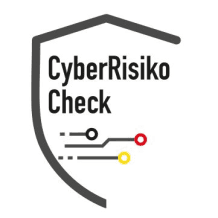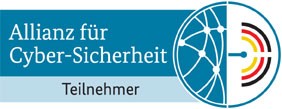Cloud Security Posture Management (CSPM) has become a central component of modern IT security strategies as companies worldwide migrate their IT infrastructures to the cloud. In this comprehensive guide, you will learn everything you need to know about CSPM: from fundamental concepts and functionalities to practical recommendations for optimizing your cloud security.\n\n=== CSPM in the Context of the Modern IT Landscape\n\nWith the rise of Public, Private, and Hybrid Clouds, the security approach has fundamentally changed. Traditional security measures designed for on-premise systems often struggle in the agile and dynamic cloud environment. CSPM tools identify misconfigurations, inconsistent processes, and potential security vulnerabilities that can arise in cloud systems. These vulnerabilities can manifest as improperly configured access rights, unsecured APIs, or outdated software versions. The goal of CSPM is to proactively prevent security threats and ensure compliance through continuous monitoring and automated remediation measures.\n\n=== The Fundamental Principles of Cloud Security Posture Management\n\nCSPM is based on several fundamental concepts:\n\n1. Continuous Monitoring: Modern CSPM solutions operate continuously and in real-time. This constant control allows for the early detection of deviations from the desired security status.\n\n2. Automated Configuration Assessment: Using templates and policies, cloud environments are systematically checked for known misconfigurations. Such assessments are often based on industry standards such as ISO, NIST, or CIS benchmarks.\n\n3. Risk Management: By prioritizing risks, IT and security teams can quickly identify which vulnerabilities need to be addressed most urgently. This significantly reduces potential attack surfaces.\n\n4. Compliance and Governance: Companies are subject to numerous regulatory requirements that also affect their cloud environments. CSPM technologies ensure that all policies are continuously adhered to and provide detailed reports and audit trails that are necessary in the event of inspections.\n\n=== Key Questions for Deepening Understanding: How, What, When, and Why?\n\nTo enable a comprehensive understanding, the following key questions regarding CSPM are highlighted: \n\n• What exactly is Cloud Security Posture Management?\nCSPM encompasses all measures, processes, and technologies used to systematically monitor and improve the security status of cloud environments. This includes analyzing configurations, detecting risks, and automating the remediation of security vulnerabilities.\n\n• Why is CSPM so important?\nCompanies face the challenge that cloud dynamics can pose both advantages and risks. Misconfigurations or human errors can easily lead to significant security vulnerabilities that attackers can exploit. CSPM helps to identify and remediate such weaknesses early before they lead to security incidents.\n\n• How does CSPM work in practice?\nThe functioning of CSPM can be summarized in a few steps: First, all relevant cloud resources are identified. Subsequently, these are continuously analyzed using automated checks and algorithms and compared with predefined security standards. In case of deviations or identified risks, alerts are generated and, in many solutions, automatic remediation measures are initiated.\n\n• Where are CSPM solutions applied?\nCSPM plays a role in nearly all modern IT infrastructures that utilize cloud services, whether they are public clouds, private clouds, or hybrid cloud environments. Particularly in industries that handle highly regulated data traffic, such as finance, healthcare, or government, CSPM solutions are indispensable.\n\n• When should CSPM be implemented?\nAs cloud environments are subject to constant change, it is advisable to integrate CSPM into the IT security architecture from the outset. Continuous monitoring and adaptation to new security requirements are essential to ensure a stable and secure cloud landscape in the long term.\n\n=== Additional Aspects and Best Practices\n\nImplementing an effective CSPM system requires a solid understanding of one's cloud infrastructure as well as a detailed understanding of security requirements. The following outlines several key aspects and best practices to consider during implementation: \n\n1. Integration into Existing Security Architectures:\nThe seamless integration of CSPM into existing security and management systems is crucial. This allows for a holistic view of all IT assets and facilitates the orchestration of security measures. For example, CSPM systems can be combined with Security Information and Event Management (SIEM) solutions to enable comprehensive analysis and response to incidents.\n\n2. Automation and Scalable Solutions:\nManual processes quickly reach their limits in dynamic and extensive cloud environments. Automated CSPM solutions help efficiently handle repetitive tasks so that IT teams can focus on strategic objectives. Scalable approaches are essential here, especially in companies dealing with large amounts of data and numerous cloud resources.\n\n3. Regular Review and Update of Policies:\nThe security landscape is continuously evolving. Therefore, it is imperative to regularly review and adjust CSPM policies. This includes updating internal security standards as well as adapting to new regulatory requirements. A dynamic approach helps ensure optimal protection even in a constantly changing environment.\n\n4. Training and Awareness of Employees:\nSecurity in the cloud begins not only with technical measures but also with the people who work with these systems. Regular training and continuing education help raise awareness of potential security risks and emphasize the importance of correct configurations. Employees who understand the fundamentals of CSPM can avoid errors and proactively contribute to a more secure infrastructure.\n\n5. Investigation of Security Incidents:\nEven with extensive protective mechanisms, security incidents can occur. A core component of modern CSPM strategies is therefore the detailed tracking and analysis of security incidents. Forensic analyses can identify causes and better defend against future attacks. This also fosters a culture of continuous improvement within the company.\n\n=== Challenges and Solutions\n\nThe implementation of CSPM is not without challenges. Different cloud providers often utilize proprietary interfaces and different configuration standards, making unified monitoring difficult. Additionally, large volumes of data and the high dynamics of the cloud environment can complicate the implementation process. The following solutions can help:\n\n• Standardization: By defining uniform security policies and best practices within the company, a foundation can be created that applies regardless of the specific requirements of individual cloud providers.\n\n• Use of Multi-Cloud Capable Tools: Modern CSPM solutions often support multiple cloud platforms, allowing for centralized monitoring of all IT resources. These tools often provide integrated dashboards that deliver a clear and intuitive overview of the security status.\n\n• Artificial Intelligence and Machine Learning: By using advanced algorithms, patterns and anomalies in the vast log data can be quickly identified. AI-based approaches allow for the recognition of unknown attack patterns before they cause significant damage.\n\n=== The Impact of CSPM on Compliance and Audits\n\nA central aspect of many industries is compliance with regulatory requirements. CSPM assists companies in meeting regulatory demands by continuously checking whether all security standards are adhered to. Detailed audit trails also facilitate the review by external auditors. Particularly in sectors such as finance or healthcare, where data protection and compliance are of utmost priority, CSPM plays a crucial role in transparently and verifiably documenting security standards.\n\nThrough the automated logging of all relevant changes, audits can be significantly simplified. Companies can thus demonstrate that they always have an up-to-date security status and take proactive action against potential threats. This traceability and transparency are invaluable for building trust with customers and partners.\n\n=== Technological Trends and Future Developments\n\nThe world of cloud security is rapidly evolving. Future developments in CSPM will be characterized by several trends: \n\n• Enhanced Automation: With technological progress, CSPM solutions are becoming increasingly autonomous. The integration of self-healing mechanisms, automated remediation of misconfigurations, and real-time analytics will gain even more weight in the future.
Cloud Security Posture Management in Germany: Current Developments
The importance of cloud security posture management in Germany is continuously growing. According to recent studies by the Federal Office for Information Security (BSI), German companies are increasingly affected by cyber threats. The Bitkom association reports that 84% of German companies have been victims of cyber attacks in the last two years.
Particularly in the area of cloud security posture management, the following trends are emerging:
Increased investments in preventive security measures
Heightened awareness for holistic security concepts
Integration of cloud security posture management into existing compliance frameworks
EU Compliance and Cloud Security Posture Management
With the introduction of the NIS2 Directive and stricter GDPR requirements, German companies must adjust their security strategies. Cloud Security Posture Management plays a central role in meeting regulatory requirements.
Important compliance aspects:
Documentation of security measures
Regular review and updates
Proving effectiveness to regulatory authorities
Practical Implementation in Business Operations
The integration of cloud security posture management into business operations requires a structured approach. Experience shows that companies benefit from a gradual implementation that considers both technical and organizational aspects.
Think of cloud security posture management like an insurance policy for your company: The better prepared you are, the lower the risk of damage from security incidents.
Additional Security Measures
For a comprehensive security strategy, you should combine cloud security posture management with other security measures:
Vulnerability Management - Systematic vulnerability management
Penetration Testing - Comprehensive security testing
Security Hardening - Employee awareness
Incident Response Plan - Preparing for security incidents
Conclusion and Next Steps
Cloud Security Posture Management is an essential component of modern cybersecurity. Investing in professional cloud security posture management measures pays off in the long run through increased security and compliance adherence.
Want to optimize your security strategy? Our experts are happy to assist you with the implementation of cloud security posture management and other security measures. Contact us for a non-binding initial consultation.
🔒 Act now: Have our experts assess your current security status
📞 Request consultation: Schedule a free initial consultation on cloud security posture management
📋 Compliance Check: Review your current compliance situation
📌 Related Topics: Cybersecurity, IT Security, Compliance Management, Risk Assessment




